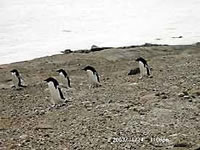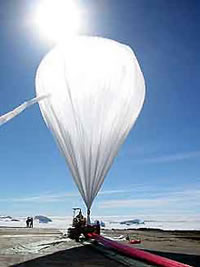TOP > Topics > 2003 > Flying a Large Balloon in Antarctica
![]()
Flying a Large Balloon in Antarctica

November 14, 2002, was the 10th anniversary of ISAS’s balloon experiment in Antarctica. On November 14, 1992, as the third ISAS member to join the Antarctic expedition, I left Harumi Wharf, Tokyo, with the 34th Antarctic Research Expedition Team aboard the icebreaker “Shirase” bound for the Showa Station in Antarctica. Ten years have passed since then. This time, I was with Mr. Matsuzaka and Mr. Saito in the Scientific Ballooning Division of ISAS, taking part in the 44th Antarctic Research Expedition Team, to carry out a large balloon experiment at the Showa Station in Antarctica again. Whereas 10 years ago we traveled by sea, this time we flew to Freemantle, Australia, and there boarded the “Shirase” bound for Antarctica.

In 2001, the “Shirase” experienced unbelievable rolling up to 52 deg in the storm zone in the Antarctic Ocean. Last year the ocean was exceptionally calm, so the greatest roll was 27 deg. Leaving the port of Fremantle on December 3, 2002, the “Shirase” arrived at the 30 miles point from the Showa Station on December 17. From there we flew to the station by helicopter. All the materials for the balloon experiment were transported to the station by helicopter as urgent supplies, so that we could start the experiment as soon as possible. The heaviest and bulkiest material was a total of 544 “7m-3 type” helium bombes.
Two balloons were successfully floated at 10:45 a.m. and 3:15 p.m. on January 13, 2003 although we experienced some problems and bad weather. The balloons ascended as if being sucked into the clear blue sky. The balloons are designed for geophysics study and one of the objectives is co-flying observation. They are flying at an altitude of 30 km and, as of January 30, 2003, had flown almost half way around Antarctica.
January 29, 2003




